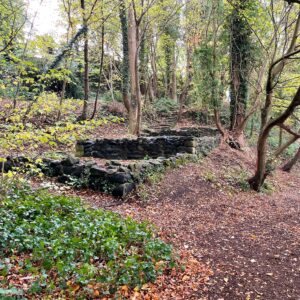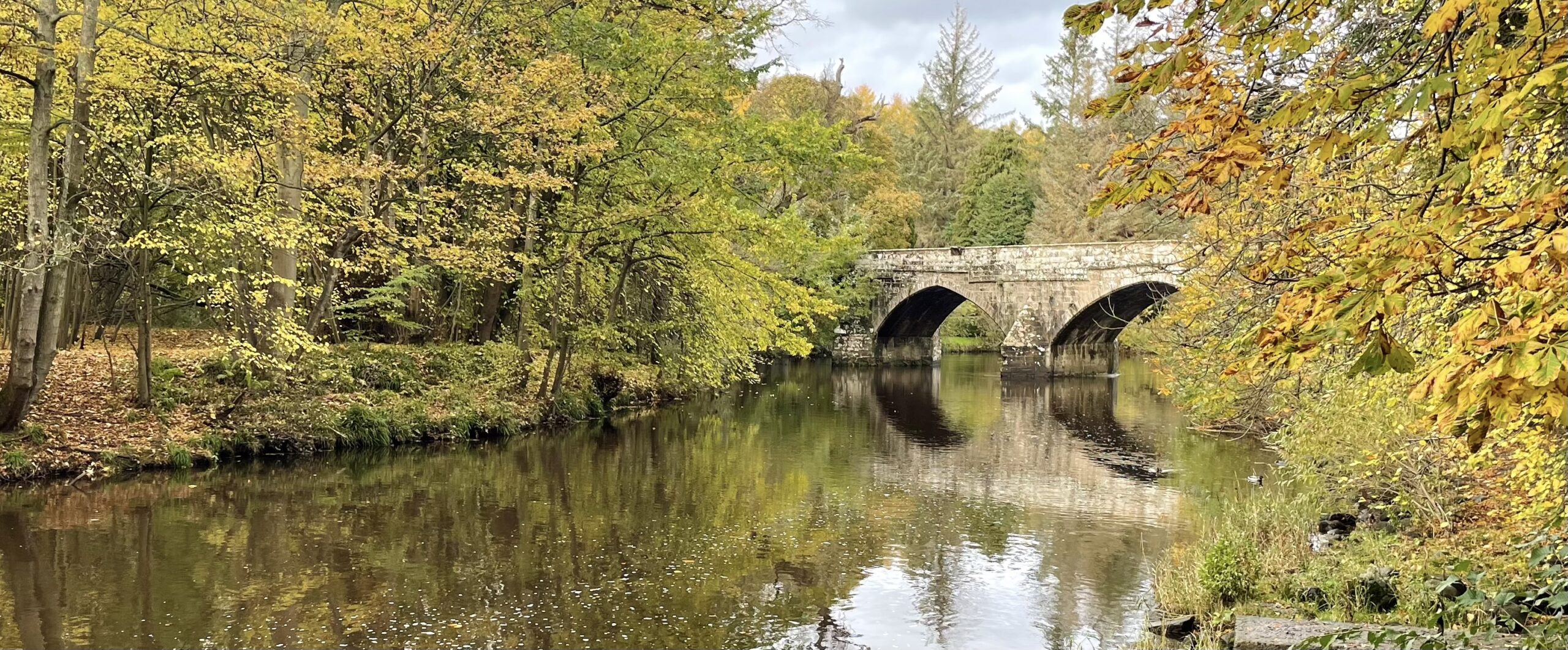The River Almond begins its quiet journey in North Lanarkshire, winding eastwards until it slips, almost unnoticed, into the Firth of Forth at Cramond. But just before it meets the tide, the Almond performs one last act of theatre. Its course cuts through a steep, wooded gorge where oak, beech and sycamore crowd the banks, and the ghosts of industry linger. Crumbling walls, moss-covered weirs and the skeletal remains of cottages tell of a time when the river’s energy was harnessed to power mills that made everything from spades and nails to furniture, paper and even gelatine. Now, only the sound of the water and the wind in the trees remember them.

For centuries, the lowest crossing of the Almond has been at Cramond Brig — “brig” being the Scots for “bridge.” It replaced a simple ford as far back as the 1400s. Rebuilt in 1619, it stood as a key route north until 1823, when a grand eight-arch bridge was raised a short distance upstream. That, in turn, was demolished in 1963, sacrificed to the march of progress and the new road bridge that now hums with traffic, indifferent to the centuries beneath it.
Yet Cramond Brig is more than stone and mortar. It holds a tale woven into Scotland’s folklore — one retold by Sir Walter Scott in Tales of a Grandfather1Sir Walter Scott. Tales of a Grandfather. Pp 253/4. ADAM & CHARLES BLACK 1892. https://dn790003.ca.archive.org/0/items/talesofgrandfath01scotuoft/talesofgrandfath01scotuoft.pdf. It was here, so the story goes, that King James, wandering incognito, found himself ambushed by a band of vagrants. Alone and cornered on the narrow bridge, he fought them off with his sword until a local man, John Howieson, hearing the commotion from his nearby barn, ran to help. Wielding nothing more than a flail, Howieson struck out so fiercely that the attackers fled.
Unaware he was aiding his king, Howieson offered the bloodied stranger water and a clean towel, then walked with him towards Edinburgh for safety. Only later did James reveal his true identity, rewarding the farmer’s bravery with the land of Braehead — the very farm on which he toiled. In return, the Howiesons were bound by a curious duty: whenever the monarch passed Cramond Brig or visited Holyrood, they were to offer a basin and ewer for the royal hands to be washed.
The custom endured for centuries. When George IV visited Scotland in 1822, a descendant of John Howieson presented a silver ewer and basin, fulfilling an oath made on that narrow stone bridge — a bridge that still stands, worn but resolute, watching the Almond flow on as the world around it changes, forgets, and changes again.
- 1Sir Walter Scott. Tales of a Grandfather. Pp 253/4. ADAM & CHARLES BLACK 1892. https://dn790003.ca.archive.org/0/items/talesofgrandfath01scotuoft/talesofgrandfath01scotuoft.pdf

Leave a Reply